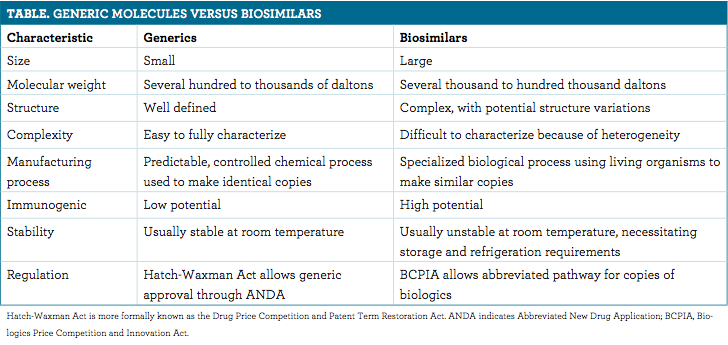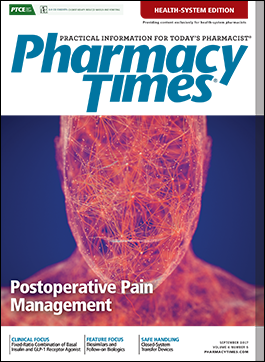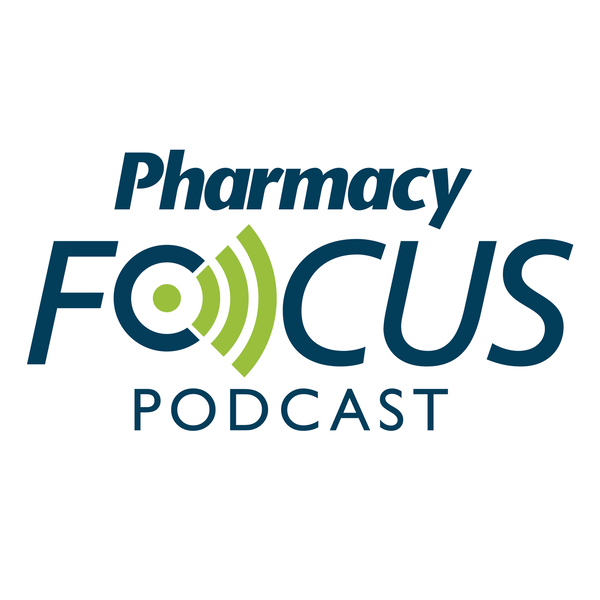Publication
Article
Pharmacy Practice in Focus: Health Systems
Biosimilars: A Similar Frontier
Author(s):
Biologics play a significant role in patient care, but because of the high cost of these medications, they may be inaccessible to patients and increase health care costs.
Biologics, drug products made from living organisms, have revolutionized the treatment of life-threatening illnesses and chronic diseases, including cancer, rheumatoid arthritis, diabetes, and autoimmune disorders. The market for biologics continues to increase and is expected to reach $390 billion by 2020 and represent 28% of the value of the world’s pharmaceutical products. In 2014, 10 of the top 25 drugs in the United States were biologics. Biologics play a significant role in patient care, but because of the high cost of these medications, they may be inaccessible to patients and increase health care costs.1-3
The emergence of biosimilars (a biological product that is highly similar to the reference product and only has minor differences in clinically inactive compounds, and no meaningful differences in terms of safety, purity, and potency from the reference product) into the US market gives clinicians more affordable options that are safe and effective. The Biologics Price Competition and Innovation Act (BCPIA, part of the Affordable Care Act) in 2010 provided an abbreviated pathway for FDA approval of biologics that are shown to be similar to or interchangeable with an FDA-approved biologic whose patent protection has expired, referred to as the reference drug. Similar to the Drug Price Competition and Patent Term Restoration Act (Hatch-Waxman Act, Public Law 98-417) in 1984 for small-molecule generics, BCPIA provides the opportunity for lower-cost alternatives and marketplace competition that ultimately results in health care savings.
PHARMACOLOGY
For a product to gain FDA approval as a biosimilar, a manufacturer must be able to show the pharmacokinetic (PK) and pharmacodynamic (PD) similarities and differences between the proposed biosimilar product and the reference product. Through comparative, head-to-head studies with the reference product, the manufacturer also must demonstrate that small changes to the biosimilar do not affect its profile or immunogenicity.4-7
Biologics and biosimilars are made from living organisms such as bacteria, yeast, and mammalian cells, rather than from the simpler atomic units of small molecule generics, and as a result they are not as easy to copy and will have a degree of microheterogeneity. The large size and complexity of the molecules and the inherent variability of the manufacturing process make it difficult to be identical to the reference product (table).

Sandoz’s filgrastim-sndz (Zarxio), a copy of the granulocyte-colony-stimulating factor (G-CSF) filgrastim (Neupogen), was the first biosimilar approved by the FDA and differs from filgrastim by 1 inactive compound. FDA approval of filgrastim-sndz was based on PK and PD studies that demonstrated similar clinical safety and efficacy profiles. The studies evaluated subcutaneous doses of 1 to 10 mcg/kg in healthy patients and the area under the curve and peak plasma concentration were within the 90% accepted confidence interval. These studies also evaluated absolute neutrophil counts and CD34+ counts as relevant PD factors for neutropenia and mobilization of hematopoietic stem cells. These end points were within the 95% confidence interval and predefined limits of 80% to 125%.
THERAPEUTIC USE, DOSING, AND ADMINISTRATION
Because biosimilars are similar but not identical, pharmacist-led automatic substitution is not permitted unless the biosimilar also has received the classification of “interchangeability” from the FDA. To be interchangeable, a biosimilar product must be able to produce the same clinical result as the reference product in any given patient. If a patient is to receive more than 1 dose of the biologic, then there should be no extra risk to the patient in terms of safety or diminished efficacy when alternating between the biosimilar and the reference product than when using the reference product without a switch.4-7
A biosimilar and the originator drug must also have the same clinical efficacy and safety profile, route of administration, dosage form, and dosage strength. In the case of filgrastim-sndz, dosage forms of 300 mcg and 480 mcg were approved and it was granted the same 5 indications as its reference product, filgrastim. A biosimilar may be approved for some but not all indications held by the reference product. Using the biosimilar for unapproved indications (either indications held by the reference product or off-label uses) is controversial because of the lack of clinical data.
SAFETY AND EFFICACY
Due to the inherent variability of biologics, there is the concern that a small change in the manufacturing process or formulation of a biosimilar relative to the innovator product will affect the clinical profile of the drug.5,6,8-10
Biologics carry a higher risk of immunogenicity, an immune response to the drug in the form of anti-drug antibodies, which can decrease the clinical efficacy of the drug and increase the risk of adverse events. The immunogenic profile can be influenced by factors related to the patient, disease, or product. Patient and disease factors should already be identified from experience gained from the reference product, but seemingly small differences in the biologic product’s structure can elicit an immune response. An example of this is pure red cell aplasia (PRCA), which is caused by cross-reacting neutralizing antibodies against erythropoietin. In 1998, Johnson & Johnson made a slight change in formulation to the European form of epoetin alfa (Eprex) and the incidence of PRCA increased from 3 cases in the previous 10 years to 175 cases in the following 6 years. The cause of the increase in PRCA is debatable, but it is used often as a cautionary example regarding the safety of biosimilars.
Postmarketing studies have confirmed the safety and efficacy profiles of the biosimilar filgrastim-sndz to the reference drug in the approved indications. Biosimilar filgrastim has been available in Europe since 2008, and the frequency of overall adverse events associated with biosimilars has not increased in the European Union since their release in 2006.
PLACE OF BIOSIMILARS IN THERAPY
Biosimilars afford clinicians the potential to provide cost-saving alternatives for life-changing medications and managing chronic diseases. In the first 4 months of filgrastim-sndz, a savings of 15% was found for the reference product filgrastim. In the European Union, overall savings for biosimilars has been between 20% and 40%.4,8,9
Pharmacists can play a critical role in supporting the use of biosimilars in health systems by interpreting data; navigating pharmaceutical contracts; and educating patients, physicians, and other health care professionals. Postmarketing pharmacovigilance is critical to the overall acceptance of biosimilars. Health systems must ensure that appropriate mechanisms are in place to track the unique adverse events associated with biosimilars.
Depending on FDA and state regulations, biosimilars may be available for automatic substitutions. Health systems may consider using a therapeutic interchange program if the biologic is therapeutically equivalent and has a potential for cost savings, and there is an established process in place for the interchange.
CONCLUSION
Biologics exert a significant impact on how health care professionals treat patients and chronic diseases; however, the cost to patients and health care systems can be high. The emergence of biosimilars in the United States provides the opportunity for greater affordability and may result in wider use of these life-changing medications. After the introduction of the biosimilar filgrastim in the European Union, overall use of both the biosimilar and reference product increased by 104%.3
Postmarketing surveillance and research on the clinical safety and efficacy of biosimilars are needed to instill consumer confidence in them. Pharmacists can play a key role in the acceptance of these drugs by evaluating the professional literature and educating patients and health care providers.
Dr. Lewis is a clinical pharmacist who is passionate about medication safety, clinical quality, leadership development, and regulatory affairs. She received her pharmacy degree from the Medical University of South Carolina and is an active member of American Society of HealthSystem Pharmacists. She has worked in a variety of practice settings, most recently as a coordinator at Duke University Hospital, Durham, North Carolina.
References
1. U.S. Food and Drug Administration. Information for Consumers (Biosimilars). August 2015. Available at: http://www.fda.gov/Drugs/DevelopmentApprovalProcess/HowDrugsareDevelopedandApproved/ApprovalApplications/TherapeuticBiologicApplications/Biosimilars/ucm241718.htm. Accessed September 16, 2015.
2. Hoffman JM, Li E, Doloresco F, et al. Projecting future drug expenditures in U.S. nonfederal hospitals and clinics-2013. Am J Health-Syst Pharm. 2013; 70(6): 525-39.
3. IMS Health. Delivering on the potential of biosimilar medicines: the role of functioning competitive markets. March 2016.
4. Lucio SD, Stevenson JG, Hoffman, JM. Biosimilars: implications for health-system pharmacists. Am J Health-Syst Pharm. 2013; 70(22): 2004-2017.
5. U.S. Food and Drug Administration. Guidance for industry: clinical pharmacology data to support a demonstration of biosimilarity to a reference product. draft guidance. May 2014. Available at: http://www.fda.gov/downloads/drugs/guidancecomplianceregulatoryinformation/guidances/ucm397017.pdf. Accessed September 16, 2016.
6. U.S. Food and Drug Administration. Drugs: filgrastim-sdnz. Updated March 6, 2015. http://www.fda.gov/Drugs/InformationOnDrugs/ApprovedDrugs/ucm436953.htm. Accessed September 28, 2015.
7. Raedler, Lisa A. Zarxio (filgrastim-sdnz): first biosimilar approved in the United States. American Health and Drug Benefits. 2016; 9:150-154
8. Camacho LH, et al. Biosimilars 101: Considerations for U.S. Oncologists in Clinical Practice. Cancer Med. 2014;3(4):889-899.
9. Weise M, Bielsky MC, De Smet K, et al. Biosimilars: what clinicians should know. Blood. 2012; 120(26):5111-5117.
10. Weise M, Kurki P, Wolff-Holz, et al. Biosimilars: the science of extrapolation. Blood. 2014; 124(22):3191-3196.

Newsletter
Stay informed on drug updates, treatment guidelines, and pharmacy practice trends—subscribe to Pharmacy Times for weekly clinical insights.






